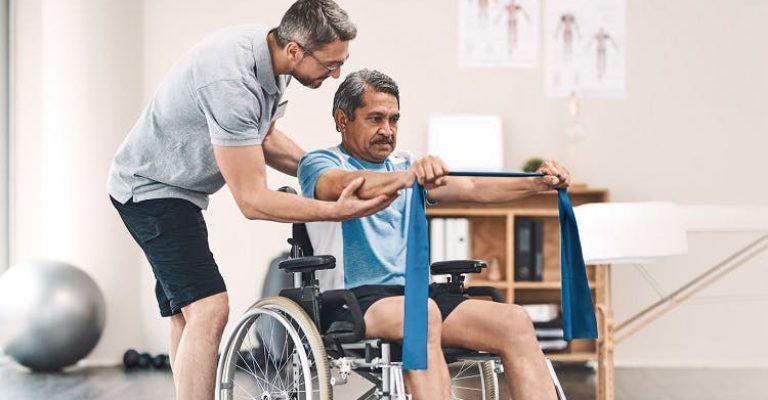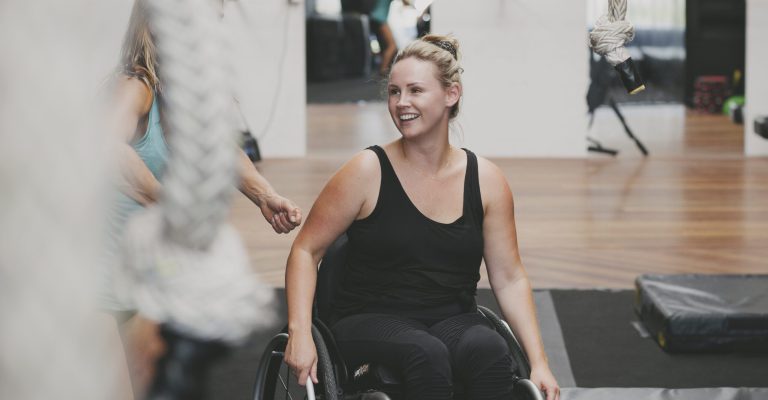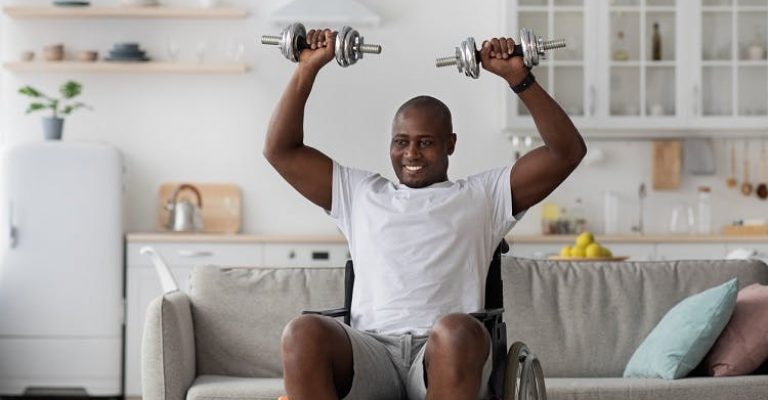
Exercises for the leg muscles are just as vital in paralysis sufferers as they are in healthy people. Gaining muscular strength is not always a possibility, depending on the etiology of the paralysis. However, it is critical to preserve the muscles, tendons, ligaments, and joints as healthy as possible in order to minimize contractures in the paralyzed legs.
Contractures arise when usually elastic tissue loses its suppleness and becomes difficult to move. This results in joint locking and increased discomfort. Passive range-of-motion exercises conducted by a caregiver promote circulation and maintain your legs as healthy as possible while you are unable to move your legs.
Individuals with paraplegia often have normal upper extremity functions, which means they have complete control over their head, neck, shoulders, arms, and hands. As a consequence, you may move your legs into different postures just by using your arms.
This article will discuss numerous paraplegic exercises that might assist paraplegics in stretching and developing their muscles. To assist in moving the legs, all you’ll need is a leg lifter or a resistance band.
Paraplegics’ functional capacities vary depending on the extent and severity of their spinal cord damage. Those with more severe spinal cord injuries will have greater paralysis, whilst those with less severe damage may merely have a weakness.
While your legs may not be able to exert their maximum force, your arms can. Passive range of motion exercises does not need paralyzed limbs to expend energy. Individuals with paraplegia may instead move their legs using their arms.
Despite the lack of active movement, passive exercise may assist in increasing the joint range of motion, boost circulation, and activate connections between muscles and the spinal cord.
Individuals who can still manage some leg motions should attempt the following activities without using their arms. It is critical to challenge oneself and repeatedly practice weaker movement patterns in order to promote healing.

Maintaining flexibility in your shoulders, arms, and back is critical for avoiding muscular tightness. This is particularly true if you use a wheelchair often since you may develop stiffness from repeatedly sitting and pushing your chair’s wheels forward.
Consider starting a stretching regimen to fight this. A pectoral stretch and a posterior shoulder capsule stretch are excellent for extending tissues in the shoulder area that tend to tense up while sitting in a wheelchair for an extended period of time. These postural stretches might assist you in avoiding a humpback posture.
Sitting on a chair, extend one leg forward and bend forward to reach your toes.
Standing, place the ball of the foot on a step or curb and slowly press the heel down towards the ground to stretch the calf muscles.
The knee and ankle are moved through their complete range of motion in these paraplegic exercises. To do these exercises, a person might lay on their back and slowly pull their knee towards their chest before extending it back out. Alternatively, they might lay on their stomach and gently press their heel towards their buttocks before extending their leg back out. These exercises are essential for keeping your muscles flexible and avoiding muscular contractures.
Slip the front part of your foot inside the loop of the leg lifter for your first leg paralysis exercise. Then, lay on your side with your leg lifter foot on top of your other leg.
Pull the leg lifter strap gently to elevate your leg to the side. When you feel your body’s natural resistance, stop tugging and maintain the posture to stretch your inner thigh.
Lift and lower your leg 15 times more, then switch sides and repeat with the other leg.
Lay flat on your back with the leg lifter on one foot. Pull the strap towards your upper body with one hand while bending the knee with the other.
Use your arms to assist in maintaining your knee in place after it reaches your body.
Hold the posture for a few seconds, then gently straighten the knee as you lower the leg.
Individuals with paraplegia may use this exercise to prevent ankle stiffness.
Sit with one leg bent to the side to make it easier to reach your foot. Stabilize your ankle with one hand while moving your foot in circles with the other.
Always rotate clockwise and counterclockwise. One method promotes circulation, while the other relieves stress.

These workouts require you to contract your muscles without moving your joints. For example, a person may attempt to push their heel into the floor while maintaining the same posture of their knee and hip. They might also attempt to squeeze a ball or an exercise band with their feet to strengthen the muscles in their legs. These exercises may assist in maintaining muscular strength and work on certain walking muscles.
The quadriceps muscles, the big muscles at the front of the thigh, are contracted by pushing the back of the knee into the bed or floor while maintaining the hip and knee in the same posture. Squeezing a therapy ball or utilizing ankle weights may help with this.
The hamstring muscles are placed in the back of the leg and are contracted by squeezing a ball or workout band with your foot. This will aid in the maintenance of muscular strength and tone.
Wearing a harness that limits the amount of weight applied on the legs is required for weight-bearing treadmill training. Individuals with paraplegia might concentrate on improving their walking technique by relieving strain on the joints.
The goal of weight-bearing treadmill training is to progressively acclimatize your legs to carry more weight until you can hold your whole body weight.
Individuals with paraplegia must exercise to prevent significant muscle atrophy, poor circulation, and tight joints.
Improving leg movements and balance after a spinal cord injury is a feasible rehabilitation objective. Individuals must, however, make an effort to undertake repeated and task-specific paraplegic exercises. It’s crucial to remember that the exercises listed above are only samples; the particular workouts advised for each person may differ.
It’s important to work with a physical therapist or other healthcare experts to create a tailored workout program that takes your unique ailment and degree of fitness into consideration.